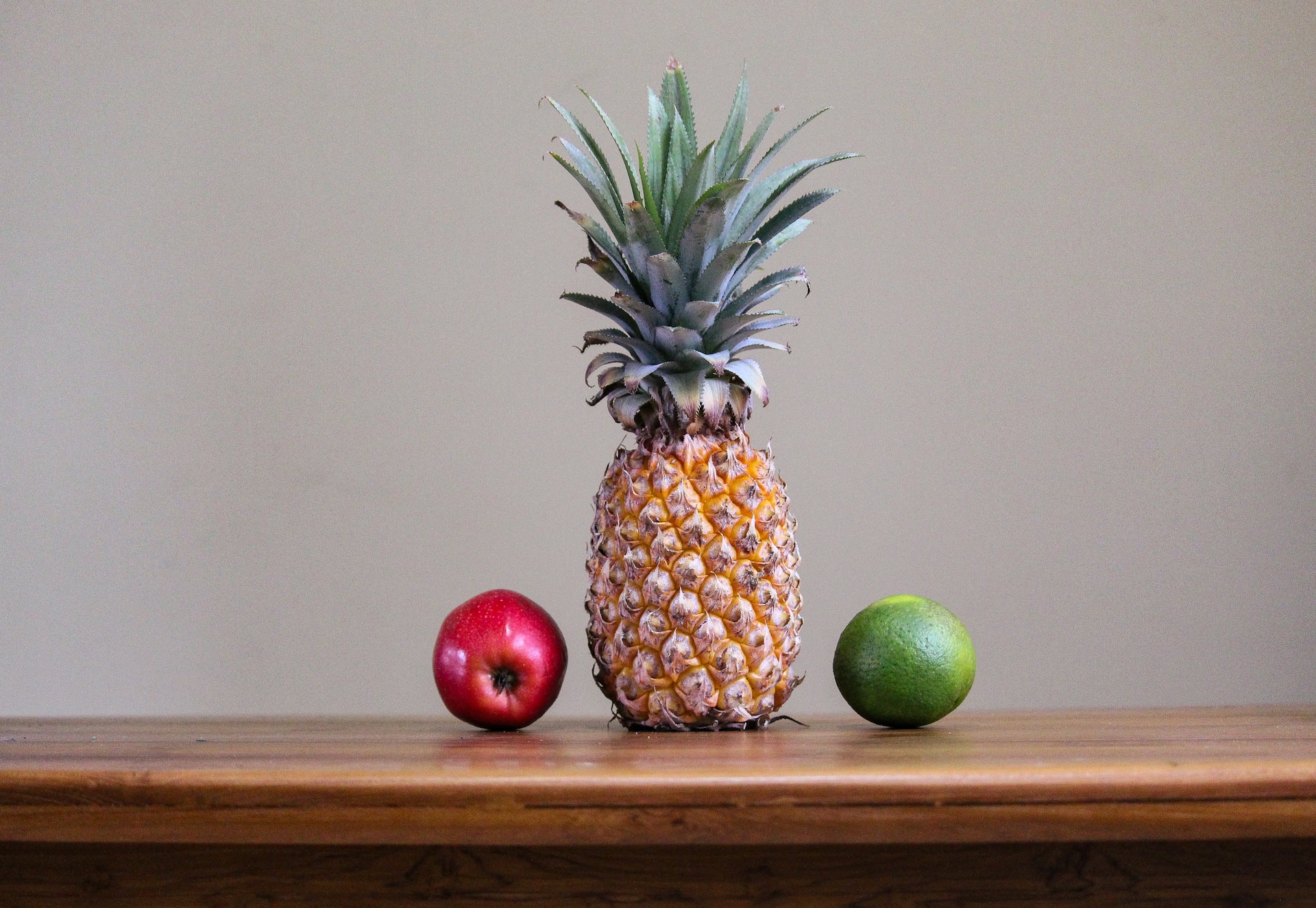The early morning gloom of winter matches my mood as I enter the office. The glass door reflects unkempt brown hair and a week’s worth of salt-and-pepper stubble—a stranger’s face. I pass my desk and glance at the two letters that spell the end of our project. One is from the foundation informing us they will not renew our grant. The other is a final notice of eviction from the university. With our funding depleted and our lab shutting down, it’s over. Five years of hard work and sacrifice are ending abruptly—or so it seems. I have one last card to play before we fold.
Part of me is surprised it has come to this. Another part knew that all roads would lead here in the end. My team will arrive to help clear everything out in fifteen minutes—plenty of time to carry out my plan.
I walk by the table showcasing our work, mainly fruits and vegetables, with a few flowers for variety. All are rendered perfectly in transparent crystal. I stop and pick up an apple. Being solid crystal, it’s quite heavy in my hand. I think back to all the failures that led to this one success. Biomolecular conversion is a precise science with a near-zero margin for error. Partial conversions, radiation burns, explosions—we’d seen it all and then some. And that’s with small objects of relatively uniform density like apples. Our attempts with watermelons had been disastrous. Given these difficulties, my final experiment seems desperate and doomed to failure.
Setting the apple back on the table, I proceed into the lab. Waiting for me, as always, is Perseus. Its six-foot-long chrome barrel gleams under the fluorescent lights. Eight inches in diameter, it’s balanced atop a four-foot-high steel tripod. A thick rubber cable extends from the back of the barrel and snakes along the floor to an ultra-high-voltage outlet.
This gorgeous machine is the world’s first and, so far, only biomolecular converter. Perseus works by emitting a focused beam of radiation that breaks down the molecular structure of its target and reassembles the atoms into a different substance, in theory. As I mentioned before, this doesn’t always go as planned.
The barrel points at a pineapple on a wooden stool eight feet away. Yes, another fruit. We’ve faced intense pressure to move on to animal testing but refused on ethical grounds. That decision contributed to the end of our funding and the project’s demise, but it was the right choice. We could not in good conscience test the machine on a living thing unless it’s capable of informed consent. And even then, well, let’s say the ethics are murky.
I move the stool with the pineapple out of the way. I’m granting it clemency today in favor of a more ambitious target.
“Perseus, initiate power-up sequence,” I say.
Three large monitors mounted on the wall behind the machine switch on. The center screen shows live video from twelve cameras now recording multiple angles. The other monitors display a collection of charts, graphs, and scrolling text.
“Hello, David,” Perseus responds. “Power-up sequence initiated.”
I unbutton my shirt while the machine boots up and runs through its diagnostic routines. It takes about a minute to check each of its subsystems. By then, all my clothes are in a neat pile on the floor.
“Power-up sequence completed,” Perseus reports. “All diagnostic checks are green.”
I stand in front of the machine. The air feels cool on my bare skin. My heart beats faster as sweat forms on my forehead. The video monitor displays live feeds of my naked body from a dozen different viewpoints. I’m reminded that lab recordings are automatic and tamper-proof, so my birthday suit is now part of our research project’s permanent record.
I take a deep breath before giving my next command.
“Initiate target analysis.”
“Analyzing target,” replies Perseus.
This part will take about thirty seconds—more time for me to ponder the wisdom of this particular life choice. Continuing the poker analogy, I’m going all in. To say it’s extreme would be an understatement. If I’m successful, my molecular conversion will validate our research, and my team will continue the project with new funding. And if not, they may have a mess to clean up when they arrive.
All three monitors start flashing red.
“Target analysis completed,” Perseus announces. “Human target detected. Engaging fail-safe.”
We’ve taken various precautions to avoid unintended accidents. This particular fail-safe prevents the machine from ever targeting a person. It’s core to Perseus’s programming, and we cannot override it. At least, that was true up until a few days ago. Unbeknownst to the team, I’ve done some extracurricular programming.
“Perseus, activate Medusa Protocol,” I command. “Authorization code omega seven delta four.”
The monitors continue to flash red in stubborn defiance. I hold my breath and wait. Fifteen seconds later, the flashing stops. The video feeds, along with the charts and graphs, reappear on the displays.
“Code accepted. Disabling fail-safe and loading Medusa Protocol.”
A chill runs through me as the reality of what I’m about to do sinks in. It’s not too late to walk away. I can shut down the machine, put my clothes back on, get some coffee, and wait for my team to arrive.
“Medusa Protocol loaded and activated for human targets,” Perseus announces. “Awaiting further instructions.”
I close my eyes and shake my head. My experiment is insane—and that’s putting it mildly. Who spends five years and millions of dollars building a biomolecular converter intending to use it on himself? Thinking about it is one thing. Doing it is something else entirely. The longer I stand here, naked and trembling, the more I come to my senses. After another minute of reflection, the right choice is clear. I address my creation.
“Perseus, lock onto target and initiate primary firing sequence.”
The chrome barrel rotates up twenty degrees and slightly left. A green laser dot appears on the center of my bare chest.
“Target is locked. Primary firing sequence initiated. Firing in ten seconds.”
I adjust my stance to be more balanced: feet shoulder-width apart, right foot a few inches ahead of my left. Perseus starts counting down.
“Ten, nine, eight….”
I place my left hand on my hip and my right hand on my thigh, tipping my head an inch to the left and assuming a neutral facial expression.
“Seven, six, five….”
I arch my back, puff out my chest, and suck in my gut. The point of this experiment is to validate the technology, but I may as well look good doing it.
“Four…”
Still trembling, I take a deep breath.
“Three…”
Exhale.
“Two…”
Ready.
“One…”
The final second stretches to eternity.
“Firing.”
An intense beam of green light erupts from the end of the barrel and strikes me in the chest. I flinch but hold my position as the radiation spreads through my torso and into my extremities. Within a few seconds, I can no longer move or speak. I’m locked into my final pose. In other words, I cannot escape or give the verbal command to shut down the machine. My point of no return has come and gone.
“Target immobilized,” announces Perseus. “Energy output and absorption rate are nominal.”
As my body resonates, I second-guess my variable density calibration algorithm. It’s a little late to check my math. I hope I end up like the apple, not the watermelon.
The cannon continues to pump my body full of energy. The heat is almost unbearable when I feel the change beginning. Perseus confirms this.
“Biomolecular conversion in progress. Thirty seconds to completion.”
With my body locked in place, I stare at the video feeds on the center monitor. My feet are already fully transparent, and the effect is moving up my shins. My knees are next, followed by my thighs. As the transformation ascends, the heat gives way to numbness in the affected body parts. I shudder and moan as Perseus renders my manhood in solid crystal.
My intimate moment is interrupted when the beam suddenly shuts off.
“Power fault detected,” announces Perseus. “Attempting to reroute from an alternate source.”
Shit. That is not what I wanted to hear. I imagine the machine turning off with its target half-man and half-crystal. Nothing good would come of that.
“Rerouting unsuccessful. Powering down in ten seconds.”
Suddenly, it hits me that I weigh as much as five hundred apples. Of course, Perseus is struggling to pull enough power to transform me. I’m surprised it made it halfway. In the history of terrible ideas, this one was truly abysmal.
At that moment, the lights go out, and the rumble of the air conditioning falls silent.
“Rerouting successful. Power stabilized. Resuming biomolecular conversion.”
The beam of green light again emerges from the barrel, striking me in the chest as before. The video feeds confirm that Perseus is converting my abdomen to crystal. I breathe a sigh of relief and pray for no more surprises.
As the transformation reaches my chest, I feel my heart stop beating. A final breath rattles in my solidifying lungs. The laser beam shines through my transparent torso and scatters in rainbows on the wall behind me.
“Ten seconds to completion.”
The conversion stops at my neck and spills down my arms, rendering them in solid crystal. Then, the wave begins its final ascent, flowing over my chin, mouth, and nose. The room falls silent as my ears transform. The images of the crystal man on the video monitor fade as my eyes become solid orbs.
The searing heat in my head subsides as my thoughts slow down. I have succeeded in proving the power of Perseus! My team will continue their research in my absence. Satisfied with the outcome of my desperate gambit, I yield to oblivion.
The energy beam switches off as the hum of the air conditioning resumes. The lights turn back on.
“Biomolecular conversion complete.”
Diagnostic output from the machine scrolls rapidly up one of the displays as Perseus finishes the final steps of the process.
“Initiating power-down sequence.”
The three monitors fade to black as Perseus powers down. A woman opens the door and walks in. She gasps and drops her coffee mug.
“Holy shit!” she exclaims as the mug shatters on the tile floor, spilling coffee everywhere. “Simon, get in here now!”
“What’s wrong, Abby?” asks Simon as he bounds into the lab behind her, his gaze soon falling on the crystal statue in the center of the room. “Oh, shit!”
“Yeah, exactly,” Abby replies. “That can’t possibly be David. It has to be another one of his pranks.”
“Well, there’s one way to find out,” says Simon, turning to the machine.
“Perseus, give me the status of your last target.”
“Hello, Simon,” replies Perseus. “Conversion of human target completed two minutes ago.”
“Replay conversion,” Simon commands.
The two researchers watch in fascination as Perseus replays the video of David transforming into solid crystal.
“Medusa Protocol?” says Abby. “This was his plan all along!”
“So it seems,” Simon replies. “I had no idea. What the hell do we do now?”
“Just a second.” Abby steps around the broken pieces of her mug and the puddle of steaming coffee, moving in for a closer look at David. She circles him, examining his transparent body from all sides. “Maybe we should give him what he wanted.”
“Well, it looks like he got what he wanted. What else are you talking about?”
“The continuation of our research, of course,” Abby replies. “I’m certain that was David’s ultimate goal here.”
Simon pauses to consider this. “I suppose you’re right. He was adventurous and unorthodox, but there was a method to his madness.”
“Exactly. We must go public with this and secure more funding before the university evicts us.”
“Agreed,” Simon replies. “I’ll make some calls.”
The two scientists leave the lab to tell the world of their discovery. David remains behind—a monument to the power of human ingenuity and the fearless herald of a global movement that will soon transform what it means to be art.
Copyright 2023 Olivia Quinn
Story notes
I know it’s wild, but I love envisioning a fictional world where research projects like this are underway. Once the technology is ready to test on a human subject, a dramatic reimagining of the boundaries of art begins. Museums, galleries, and parks worldwide all stand ready to accept statues of organic origin. The researchers just need a daring volunteer to go first. Are you interested?
Article Tags: Male · Nudity · Sci-Fi · Statue · Volunteer







